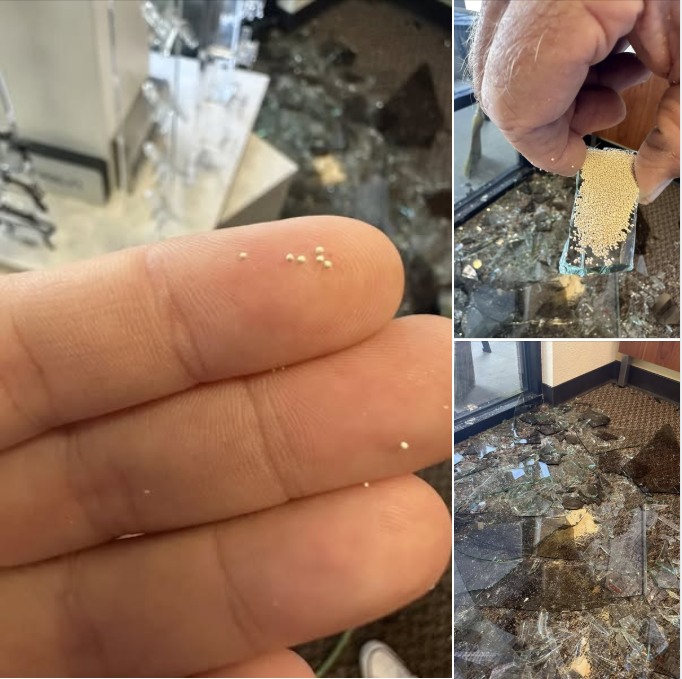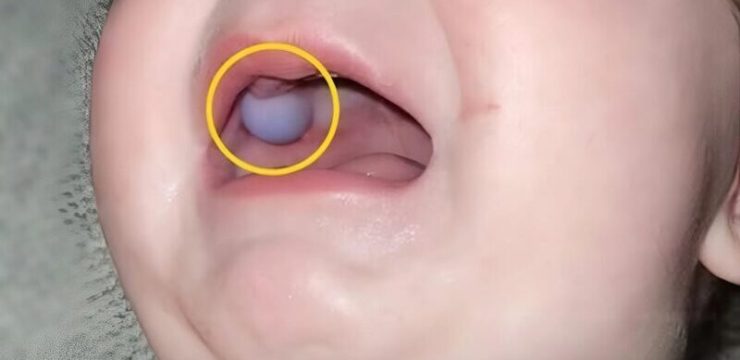When burglars broke into my wife’s office, we knew we’d be dealing with broken windows and stolen items. What we didn’t expect, though, was finding a bunch of tiny, cream-colored beads scattered across the floor among the shards of glass. At first, they looked like some kind of grain—maybe millet or couscous—which only added to the confusion.

Even the police who arrived at the scene had no idea what they were looking at. Unsure of what we were dealing with, and erring on the side of caution, we handed the beads over to the authorities. Later on, we finally got an explanation—and it turned out to be something incredibly simple and not mysterious at all. The little beads didn’t come from the burglars or have anything to do with the crime. In fact, they were part of the window itself. Specifically, they came from the structure of a dual-pane window, also known as an insulated glass unit. These modern windows are made with two panes of glass separated by a metal spacer. Inside that spacer, manufacturers include small moisture-absorbing balls called desiccant beads. Their purpose is to soak up any moisture that might find its way between the panes, which helps prevent that annoying fogging or condensation that can cloud your view.
When the burglars shattered the window, the impact didn’t just break the glass—it also ruptured the metal spacer that held these desiccant beads. As a result, they spilled out, mixed with the broken shards, and landed on the carpet, looking like something from a crime thriller. But really, they were just doing their job until the window took a hit it couldn’t survive. The use of desiccant beads in dual-pane windows is quite common, and the materials used for these moisture absorbers include substances like silica gel, zeolite, or molecular sieves. These beads are designed to absorb water vapor, keeping the space between the panes dry and clear, which enhances the window’s insulating performance. While they’re non-toxic, it’s still important to clean them up right away. Curious pets or small children could easily mistake them for something edible, and no one wants that kind of mix-up.
What surprised us most was how we initially saw those beads as a clue or some strange evidence left behind by the intruders. Turns out, they were just part of standard construction—a regular, everyday feature that we never even knew existed. It’s a good reminder that sometimes, the strange little things we find in the aftermath of chaos are really just overlooked pieces of the world around us.
There wasn’t a hidden message or any weird trick involved, just physics and design doing what they were supposed to do. So if you ever come across small beads in the midst of shattered glass, don’t jump to conclusions. You’re probably looking at the desiccant from a broken insulated window. It’s not a mystery—it’s just how modern windows are built to perform better in all kinds of weather conditions. And while it might catch you off guard at first, it’s perfectly normal. Of course, if you’re in Central California and happen to notice someone selling high-end sunglasses—say, Ray-Bans or Costas—in a parking lot or out of a trunk, you might want to give us a heads-up. Some of those items could very well be what went missing during that break-in. But as for the beads? Case closed. They weren’t left behind as some sort of calling card. They weren’t evidence of anything unusual. They were simply one more thing we learned the hard way about how stuff is built. And in the middle of a frustrating, stressful situation, that little discovery turned out to be one of the few clear answers we actually got.





